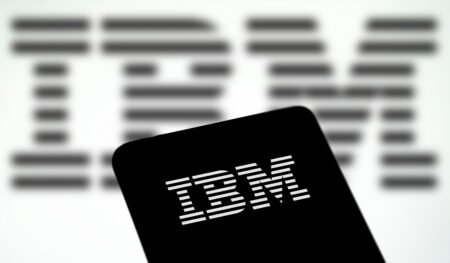The Cisco Systems Q4 fiscal 2022 earnings call was a veritable master’s class in two functions that are critical in today’s turbulent economic environment: adapting to customer needs and building supply chain resiliency.
As a tech bellwether, Cisco’s results and its top execs’ commentary are invaluable indicators of the customer pulse. Additionally, its progress in addressing component shortages that impact its financial results could be a great leading indicator for other supply-constrained companies. They’re important to Acceleration Economy readers, given Cisco’s role as a strategic tech supplier and as a company that runs a highly complex global supply chain.
As such, we want to share some of the most insightful comments from Cisco executives in these key areas. This quote from Chairman and CEO Chuck Robbins sums things up perhaps better than any other inputs that he and CFO Scott Herren delivered.
“I think if you ask our customers if they would pause spending during a crisis, they would probably respond, ‘When is there not going to be a crisis given what we’ve dealt with the last three years?’ And so, in general, we don’t hear a lot of difference,” Robbins said.
The Results
Cisco’s results and forecast were generally ahead of analyst estimates, so they had a bullish near-term impact on the company’s stock. That’s despite extremely difficult year-over-year revenue comparisons as well as a negative impact on margins and cash flow because the company paid more for components in some cases to meet customer demand.
Fourth quarter revenue was $13.1 billion, flat year over year. Full-year revenue was $51.6 billion, up 3%. The company reported strong demand with record full-year product orders and backlog. GAAP earnings per share of $2.82 decreased 4% year over year.
The company is forecasting FY2023 revenue to grow 4% to 6% year over year.
Customer Demand, Buying Trends
“From a demand perspective, we continue to experience solid customer activity beyond our ability to deliver as is reflected in the growth of our backlog that we saw throughout the quarter. While our business is not immune to macro trends, we will remain disciplined in our operations while benefiting from robust multiyear investment trends and the technology transitions I mentioned earlier,” CEO Robbins said.
“Our innovation is helping our customers and partners navigate an increasing amount of complexity, and there is a greater sense of urgency to leverage leading-edge technologies to deliver on their strategic objectives.”
Those strategic objectives and that urgency are very much focused on deploying cloud technology:

“We see significant opportunity ahead as these customers build out massively scalable cloud networks and increasingly turn to Cisco to help them meet accelerating demand for cloud services.”
Chuck Robbins, Chairman and CEO, Cisco
“While we anticipated some moderation from the unprecedented product order growth of last year, demand signals remain solid.”
He noted that customers have concerns about supply and product availability, and this has been a point of discussion: “Our discussions with them focused on strategic projects, supply assurance, and the critical role Cisco can play to support their long-term technology road maps. They did not indicate any fundamental shift in their commitment to technology investments.”
Additionally, customers’ time horizon to realize ROI on their investments are somewhat compressed and they’re thinking about investments in the context of fiscal 2023. “In some cases, customers are looking for a little shorter ROI, so that affects how they think about what products they’re buying in these kinds of times,” Robbins said. “In some cases, customers are looking ahead to lead times to fiscal ’23 budgets and trying to better understand what their budgets are going to look like because the shipments and the payments would be in the ’23 time frame.”
Demand remains strong for the most strategic projects and investments — and cloud is at or near the top of that list. Fundamentally, technology is too closely tied to business outcomes to halt or significantly delay investments, as customers that weren’t well prepared for the work-from-home impact of Covid-19 learned so painfully.
The focus on ROI is somewhat accelerating — a point that CEO Matthew Prince made in his remarks during Cloudflare’s earnings call.
Supply Chain, Component Availability, and Costs
The top Cisco execs made a number of comments indicating progress against supply constraints but noted that the impact will continue into FY23. One of the most compelling comments from my perspective was that they redesigned “hundreds” of products to use alternative components and thereby address shortages.
Robbins made this point, and also noted that they have added new suppliers and leveraged alternative suppliers, with positive effect. “The decisions we made and the multiple actions we have taken over the past two years are helping to improve our resiliency and will help offset cost inflation,” he said.
Based on numerous interviews with supply chain experts, it’s that level of resiliency that companies now recognize they need, and Cisco’s progress very likely places it ahead of the pack in building that capability.
However, those actions are having a near-term impact on results.
“In our product gross margin, higher component and commodity costs, as well as higher freight and logistics related to supply constraints, were the predominant drivers of lower-than-expected margins,” CFO Herren said.
For instance, the company’s operating cash flow was $13.2 billion, down 14% compared to fiscal 2021, driven primarily by advanced payments for inventory purchases to secure component supplies, Herren explained. “While these payments had a negative impact on full-year operating cash flow, these and our other related actions helped to improve the supply situation in q4 and future quarters.”
They also impact costs. While the execs told analysts that component availability constrained parts “we have been chasing in the broker network” where the parts come at premium costs. “And you see that reflected in the gross margin,” Herren said. He added the goal is to get the product “in the hands of our customers.”
To further that latter point, Robbins said that the rate and pace of revenue growth “is much more a function of component availability than on our quarterly product order growth.”
Cisco seems to be another indicator, like Walmart, a giant in the retail industry, that some big companies are getting a better handle on their supply chain issues and flexing their tech muscle to rein in inventory and cost challenges.
For more exclusive coverage of innovative cloud companies, check out Cloud Wars Horizon here:









